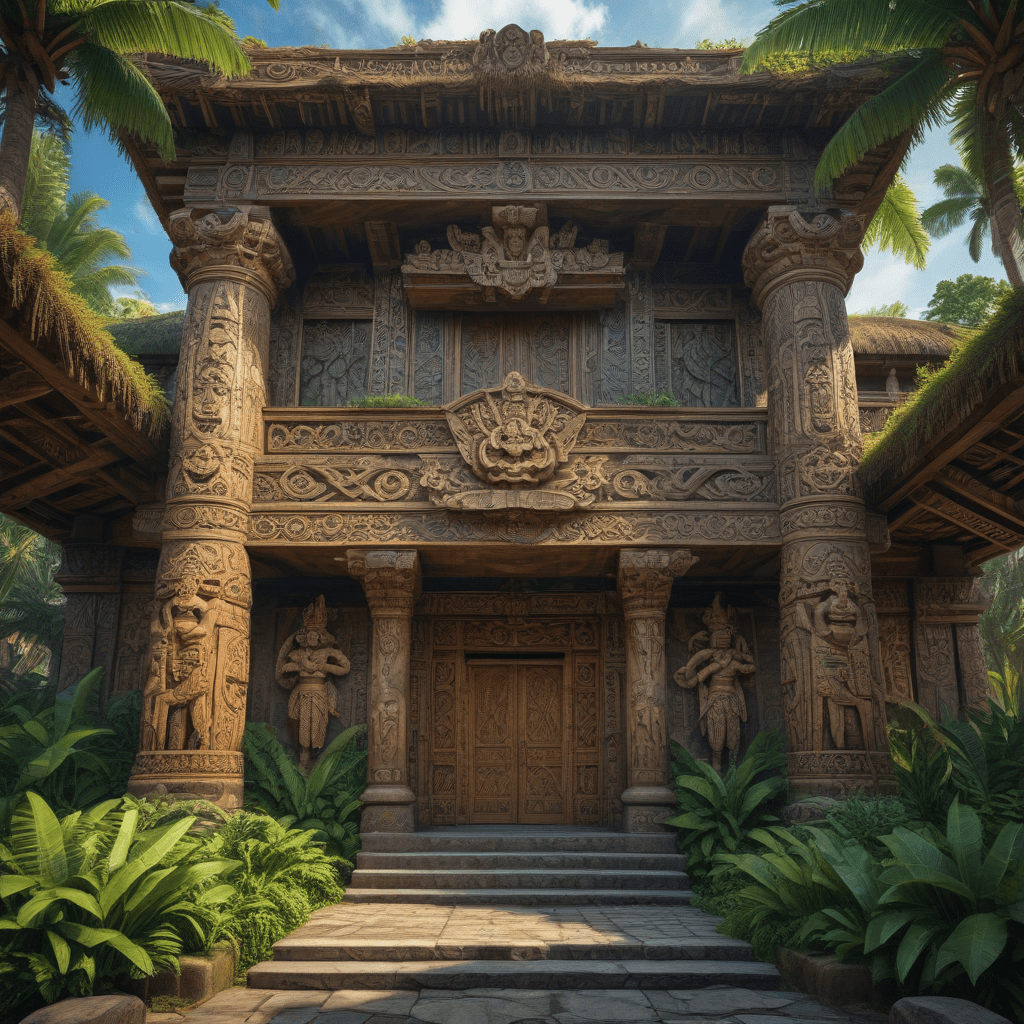The Influence of Polynesian Mythology on Architecture and Design
Introduction:
Polynesian mythology, an integral part of Polynesian culture, has profoundly influenced the architecture and design of the region. Rooted in ancient beliefs and practices, this mythology has shaped the forms, symbols, and environmental principles of Polynesian structures.
Historical Overview of Polynesian Mythology:
Polynesian mythology evolved over centuries as people navigated the vast Pacific Ocean. Polynesian seafarers relied on traditional knowledge, stories, and beliefs to guide their journeys and establish new settlements. These mythological narratives influenced the design of canoes, which played a crucial role in exploration and transportation.
Architectural Structures:
The most significant architectural structures in Polynesian culture are marae, sacred ceremonial platforms. These platforms serve as gathering places for religious rituals, community events, and ancestral connections. Marae often feature elevated platforms, carved stone structures, and intricate designs influenced by Polynesian mythology.
Design Elements:
Polynesian mythology is intricately woven into the design elements of buildings and objects. Geometric patterns inspired by nature, such as waves, stars, and plants, are commonly found in carvings, tapa cloth, and other forms of Polynesian art. Carvings depict mythological figures and stories, while the use of colors, such as red, white, and black, carries cultural and symbolic significance.
Mythological Symbolism:
Polynesian mythology is imbued with a rich symbolism that finds expression in architecture and design. The Sky God, for example, is represented in high roofs and peaked gables, symbolizing the heavens. The Earth Mother, on the other hand, is embodied in the foundations of buildings, emphasizing the connection between the physical world and the ancestral realm.

6. Environmental Considerations
Polynesian architecture reflects a profound understanding of the natural environment. Buildings are often oriented to align with celestial bodies, such as the sun and stars, ensuring optimal sunlight, ventilation, and views. Sustainable use of natural resources is a key principle in Polynesian design. Materials like wood, stone, and thatch are sourced locally, minimizing environmental impact.
7. Cross-Cultural Exchange
Polynesian mythology has influenced architectural traditions beyond the Polynesian region. Western architects, such as Frank Lloyd Wright, were inspired by Polynesian forms and motifs. Polynesian designs have also found their way into contemporary art and architecture, fostering a cross-cultural dialogue. Collaboration between Polynesian and non-Polynesian designers has led to innovative architectural projects that bridge cultural boundaries.
8. Sustainability and Resilience
Traditional Polynesian designs are inherently sustainable and resilient. They incorporate natural ventilation and rainwater harvesting systems, reducing energy consumption. The use of local materials minimizes transportation costs and promotes self-reliance. The integration of cultural beliefs into architecture fosters a deep connection between people and their environment, ensuring its preservation for future generations.
9. Tourism and Cultural Identity
Architectural landmarks inspired by Polynesian mythology have become popular tourist destinations. Tourists from around the world visit marae and other cultural sites to experience Polynesian history and traditions firsthand. Preserving traditional designs plays a vital role in safeguarding Polynesian cultural identity. It ensures that future generations can connect with their heritage through tangible expressions of their mythology and beliefs.
10. Conclusion
Polynesian mythology has had an enduring influence on architecture and design, shaping the cultural landscape of the region. From sacred marae to contemporary structures, Polynesian designs embody the beliefs, practices, and environmental wisdom of their people. Preserving and revitalizing these traditions is essential for maintaining cultural identity, fostering sustainable development, and inspiring generations to come.
FAQs:
-
How do marae reflect Polynesian mythology?
Marae serve as sacred ceremonial platforms, providing physical spaces for rituals and connections to the spiritual realm. -
What does color symbolism represent in Polynesian architecture?
Colors such as red, white, and black hold significant cultural and symbolic meanings, representing elements like the Sky God, Earth Mother, and ancestral spirits. -
How does Polynesian architecture incorporate environmental principles?
Polynesian buildings are designed with orientation and material choices that minimize environmental impact, ensuring sustainability and resilience.



